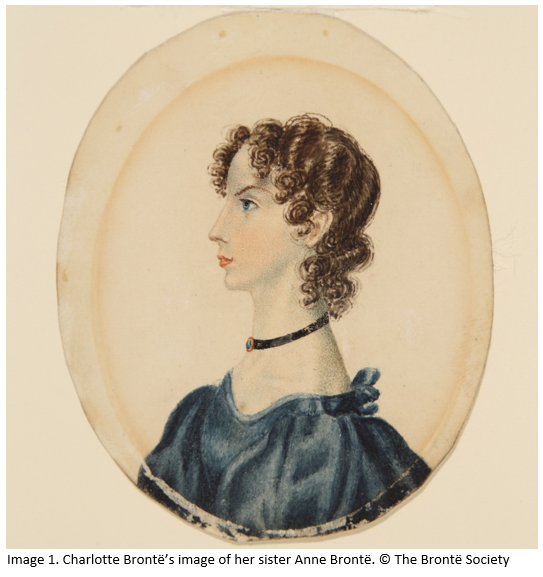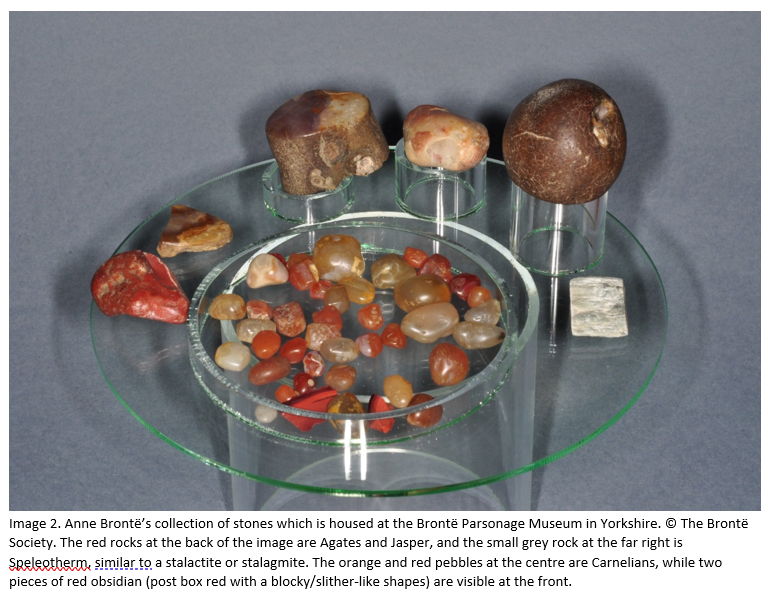UNIVERSITY OF ABERDEEN MEDIA RELEASE

Anne Brontë was a rock star.
She’s renowned as a novelist and one of the three famous sisters, but a detailed scientific analysis of Anne Brontë’s collection of stones has revealed her to be a skilled collector with an active interest in geology.
The youngest of the Brontë sisters accumulated a collection of attractive specimens before her death aged 29 in 1849.
It was previously thought that she could have collected the items chiefly for their aesthetic value, however research by scholars at the University of Aberdeen has revealed that Anne was an informed and skilled participant in the emerging science of geology, which in the mid-19th century was enjoying what would become known as its ‘golden age’.
Using portable Raman spectroscopy, a technique used to identify the mineral composition of rocks and stones, researchers analysed Anne’s collection which is housed at the Brontë Parsonage Museum in Howarth in Yorkshire.

They found that as well as carnelians and agates which she collected in Scarborough, where she worked as a governess, the collection contained flowstone (a kind of calcium carbonate that formed in a cave like a stalagmite), and a rare kind of red obsidian which originated outside of the UK. It is also likely that Anne would have visited the Rotunda Museum close to where she stayed in Scarborough, which contained exhibits featuring the area’s geology.
Researchers concluded that the collection shows Anne to be an informed collector with a serious interest in geology.
Sally Jaspars, a student at the University of Aberdeen’s School of Department of English, is studying Anne Brontë as part of her PhD, and contacted Dr Stephen Bowden from the University’s School of Geoscience for assistance in analysing the collection. The results of their collaboration, along with Professor Hazel Hutchison of Leeds University and Dr Enrique Lozano Diz at ELODIZ, a company specialising in spectroscopy analysis, have been published in Brontë Studies.
Sally said: “When I learned of Anne Brontë’s collection I thought it a great opportunity to engage in interdisciplinary research combining science and literature.
“Her interest in geology is mentioned in her literary works – indeed in The Tenant of Wildfell Hall she references the science and a book by Sir Humphry Davy directly.
“This is the first time that Anne’s collection has been systematically described and fully identified, and in doing so we add to the body of knowledge on Anne and show her to be scientifically minded and engaging with geology. She was an intelligent and progressive individual who was in tune with the scientific enquiry of the time.”
Dr Bowden added: “Our Raman spectroscopy analysis which we undertook at the Brontë Parsonage Museum shows that Anne Brontë did not just collect pretty stones at random but skilfully accumulated a meaningful collection of semiprecious stones and geological curiosities.
“Anne’s collection comprises stones that are sufficiently unusual and scarce to show that they were collected deliberately for their geological value, and it’s clear that her collection took skill to recognise and collect. “
*Images courtesy of the Brontë Parsonage Museum and Brontë Society.



